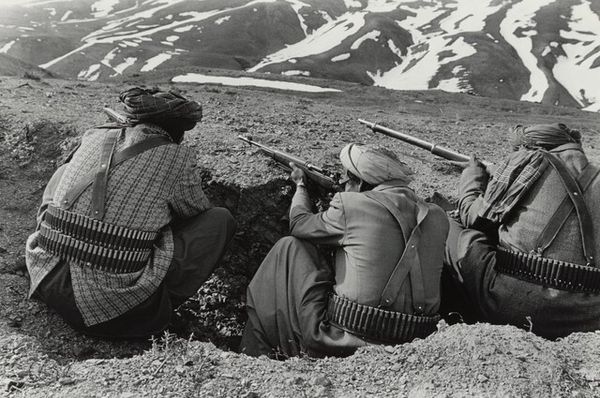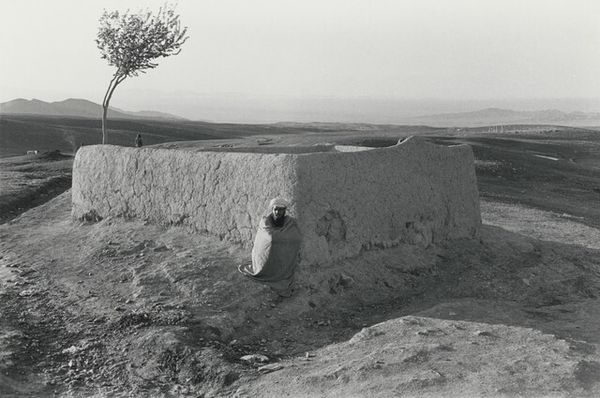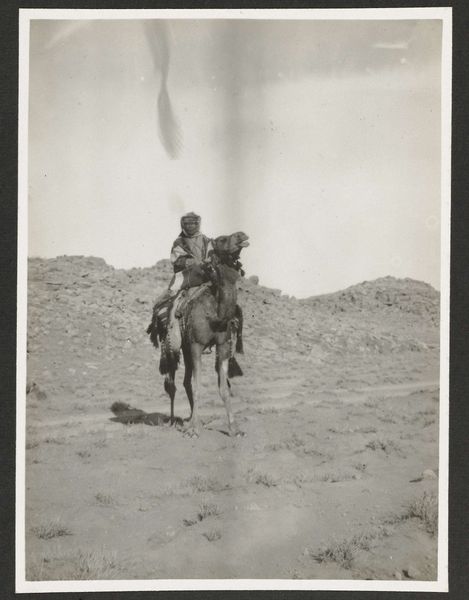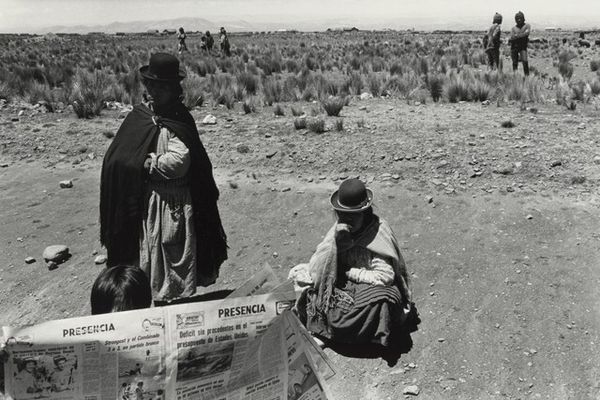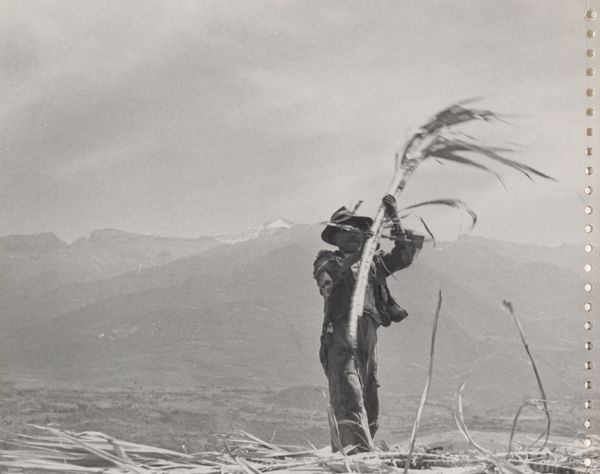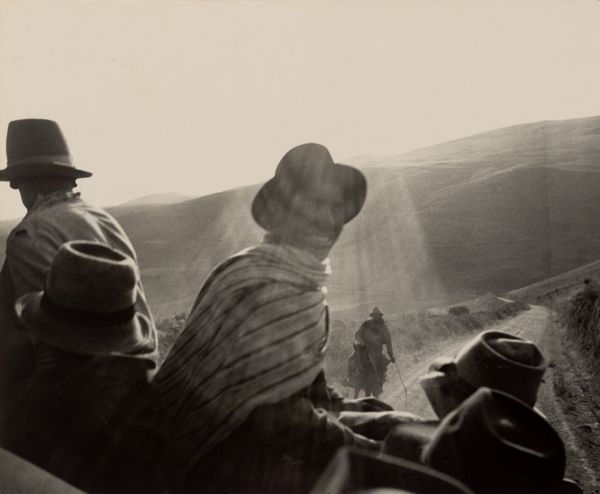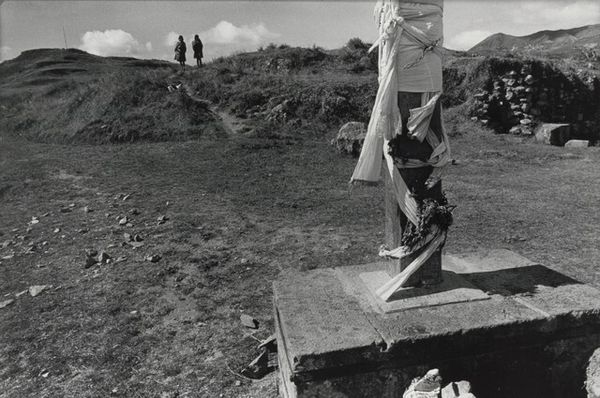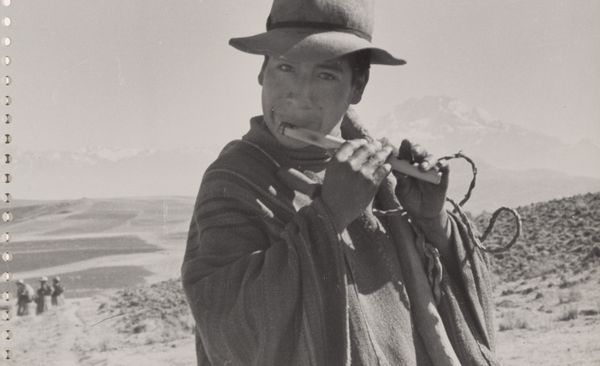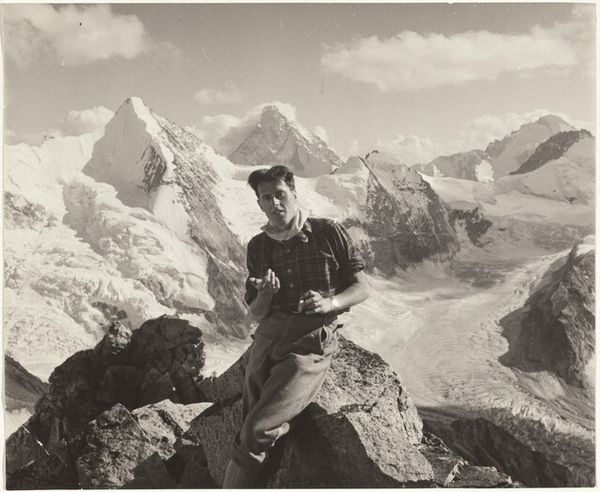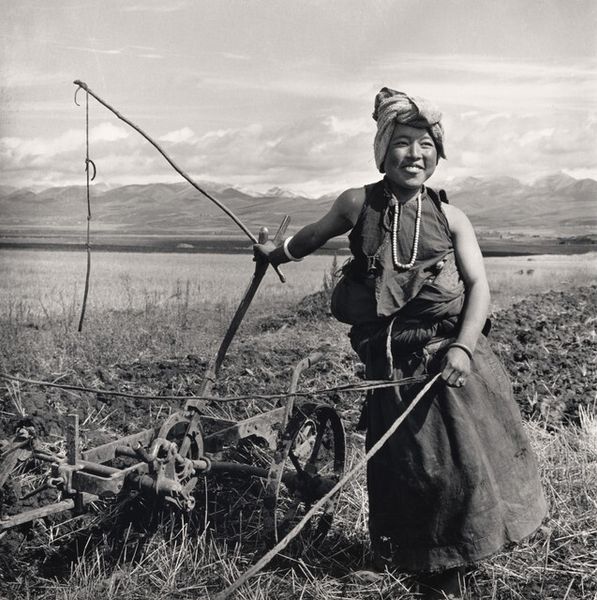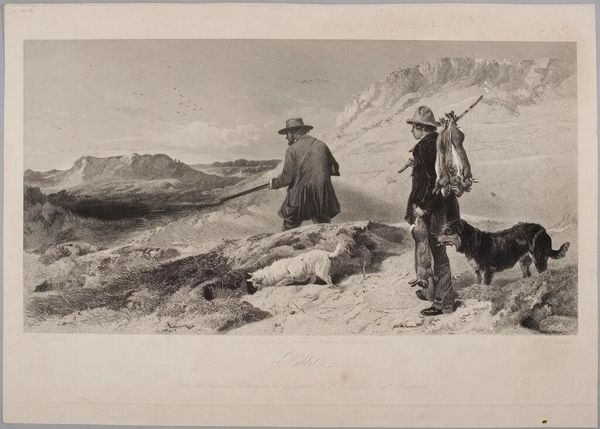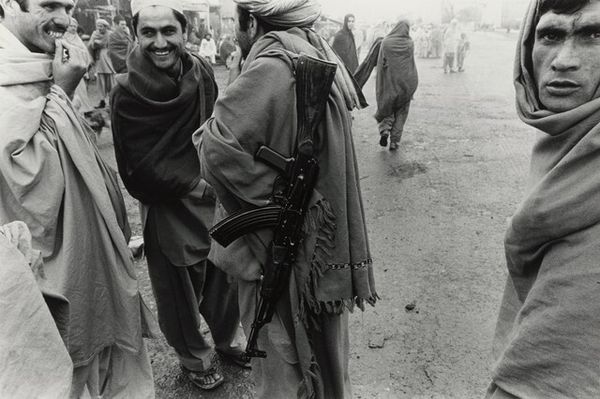
photography, gelatin-silver-print
#
portrait
#
contemporary
#
black and white photography
#
landscape
#
monochrome colours
#
photography
#
black and white
#
gelatin-silver-print
#
monochrome photography
#
monochrome
Dimensions: image: 26.5 × 39.5 cm (10 7/16 × 15 9/16 in.) sheet: 35.56 × 43.18 cm (14 × 17 in.)
Copyright: National Gallery of Art: CC0 1.0
Editor: This gelatin-silver print, "Bamiyan, Afghanistan," was taken by Ed Grazda in 1983. There's a stark, almost barren quality to the landscape. It's dominated by earth and sky and this figure carrying what looks like a weapon. How would you interpret this piece? Curator: From a materialist perspective, the photograph offers insight into the production and representation of conflict. Look at the process itself. Grazda chose gelatin-silver, a relatively accessible medium, yet it’s capable of producing an image imbued with gravity and timelessness. The means of its dissemination - photography - democratizes access, yet the subject remains rooted in a specific socio-political reality. Editor: So, you’re focusing on how the photograph itself was made and what that means in terms of broader accessibility? Curator: Exactly. The photograph captures labor and struggle, specifically the work of resistance during the Soviet-Afghan War. It's about more than just the visual, isn’t it? What labor went into obtaining that gun, into living in that terrain? The landscape almost becomes a character, a stage for these power dynamics. How does the artist frame it, what textures and tones does he chose? Editor: I see your point. It's not just about the “what” but about how the materials and processes used shape our understanding of the conflict and the individual’s role within it. Curator: Precisely! Think about consumption, too. This image will circulate in various forms – prints, publications, digital reproductions. How does its meaning shift with each iteration, each audience? Does the method of dissemination create or eliminate opportunities to connect and challenge? Editor: It's interesting to consider how the materiality and circulation add layers of meaning beyond the immediate subject of the photograph. I hadn’t considered that so broadly before! Curator: Indeed, the image functions as both an object and a document, simultaneously shaped by and reflective of broader historical forces and individual agency.
Comments
No comments
Be the first to comment and join the conversation on the ultimate creative platform.
